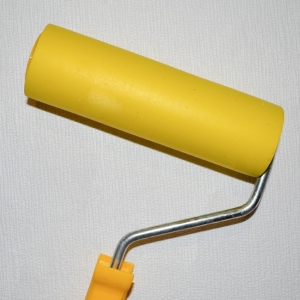The diversity of modern flooring is amazing. It is laminate, and parquet, and tile. But together with this, consumers, despite the wealth and aesthetic taste, often prefer the old good linoleum, which is capable of imitating more expensive coating. If you want to achieve his perfect laying, it is recommended to correctly calculate the amount of material and try to do without junctions. But if it did not work out to minimize, do not be mistaken! We will tell you how to make them almost invisible.
Foreign manufacturers produce linoleum, which has a large width, namely - 4 meters. For most Russian apartments, it would be the perfect version of laying material without junctions. But domestic companies offer products width about one and a half meters. This is enough only for small premises, but already in the living room will have to tinker with several canvases, gluing among themselves.Previously, the linoleum was combined with a special typewriter working on the principle of a conventional iron. As a result of using such an apparatus, a durable seam was obtained. But I looked at docking ugly. In addition, when it was diverged, cloves were used to restore it over the steel ribbon. Today, fortunately, these methods have sunk in the fly.



- Type A. This method is used to connect a solid commercial linoleum, as well as for tightly laid panels purchased recently. The glue is liquid enough, allows you to create a neat junction, which is almost inconspicuous and which can be found only to the touch.
- Type C. This adhesive is designed to repair the old linoleum coating. Since it is more dense, it perfectly fills the large gaps between the cloths already laid linoleum, such that have a width of 0.3-4 mm. At the same time, a layer of new linoleum is formed in the docking place, and the protruding excess are removed after complete drying of the seams.
- Type T. Adhesive composition is used to fasten coatings made of polyvinyl chloride on a polyester basis. This kind of cold welding is less common among private masters.
There is a number of advantages like this method of gluing a linoleum: does not require large financial investments, it is quickly carried out, as a result, it turns out barely noticeable seams.
Consider in more detail the process of cold welding of the new linoleum:- First, carefully prepare the coating, eliminating dust and moisture at the place of gluing.
- Shoot on the joints of one-sided adhesive tape sufficient width.
- Before using cold welding, shift this tape where the seam will be performed.
- After that, you can fill the slot to the slide, squeezing it through the nose, located at the top of the tube.
- Wait 20 minutes, removing subsequently scotch.
- After 40 minutes flooring ready for operation.
- Drops of adhesive on the webs are removed after complete drying using a sharp knife.
During repairing old coating do likewise, skipping step bonding tape. The coating has to lie down, and it's not necessary.

However, despite all the advantages of cold welding, do not forget about the presence of chlorine-containing adhesive chemical substances that are harmful to our body. Therefore, for sure it is recommended to use gloves and follow the instructions on the package carefully.

































